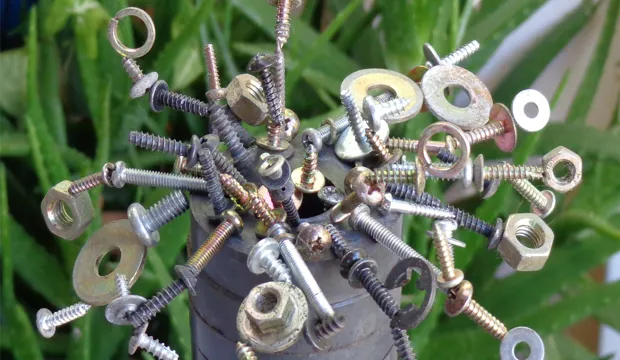
Design a hoverboard
Designing a levitating hoverboard that works using magnetism
1980s films predicted that by 2015 people using hoverboards would be a very common sight, but only now is the technology finally reaching the point where it can become a reality.
In this fun activity designed for GCSE students, learners will have the opportunity to design their very own levitating hoverboard.
Students will combine their creative prowess with scientific principles as they tackle the challenge of designing a functional hoverboard that defies gravity through the power of magnetism. This hands-on experience will not only push the boundaries of students’ creativity but also empower them to apply scientific theory in a tangible and captivating way.
Activity introduction
This activity is one of a series of free resources designed to support the delivery of the new 9-1 GCSEs in Design & Technology, and Engineering. Each resource covers a key topic from one or more of the specifications for these subjects. This resource focuses on designing a hoverboard that uses magnetism and magnetic fields.
Students will need to design a hoverboard for teenagers that can move forward without touching the ground. The product should use a suitable method of keeping the board in the air, such as magnetism.
Learners should draw on their scientific knowledge of magnetism and magnetic fields and focus on applying this in an engineering/design context.
Magnetism is a fundamental scientific phenomenon. Utilising this has allowed designers to create new and innovative products, such as fully working MAGLEV trains and hoverboards.
How long will this activity take?
This activity will take approximately 40-50 minutes to complete. Download the activity sheet below for a full lesson plan and detailed teachers’ notes.
The engineering context
Utilising scientific principles for product design constitutes a significant component within the new GCSE curriculum for Design & Technology and Engineering. The insights acquired from this approach can also be harnessed while leveraging magnetic forces and other associated scientific phenomena to bolster the conceptualisation of upcoming products.
Suggested learning outcomes
Upon completion of this task, students will have the capacity to create a functional levitating hoverboard by applying scientific principles to product design. Additionally, they will be able to effectively convey design concepts using sketches, written notes, and annotations.
Download the free activity sheet below!
All activity sheets and supporting resources are free to download, and all the documents are fully editable so that you can tailor them to your students and your schools’ needs.
The activity sheet includes teacher notes, guidance, helpful web links, and links (where appropriate) to the national curriculum in the four devolved UK nations; England, Northern Ireland, Scotland and Wales.
Please share your classroom learning highlights with us @IETeducation





